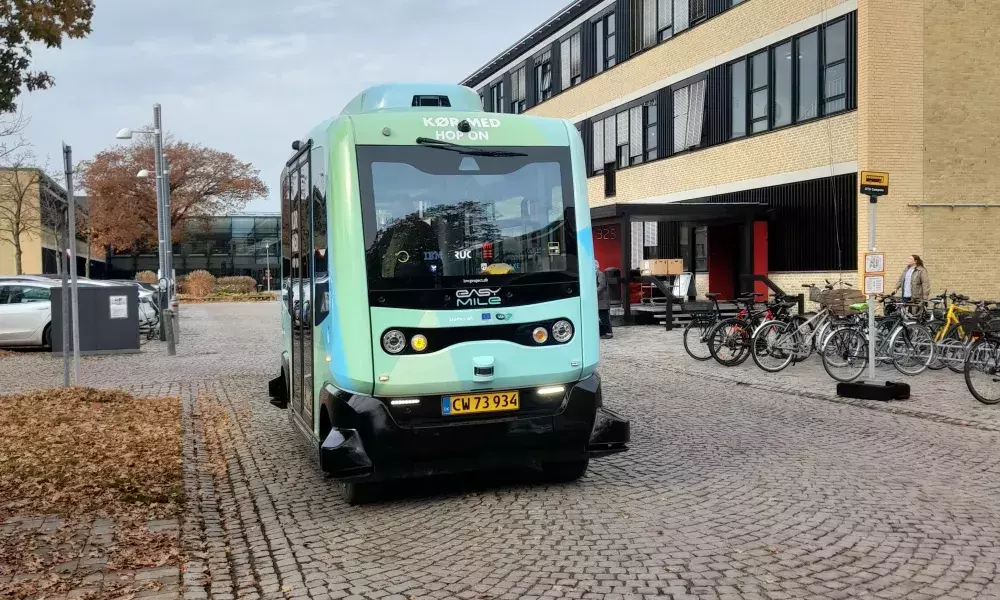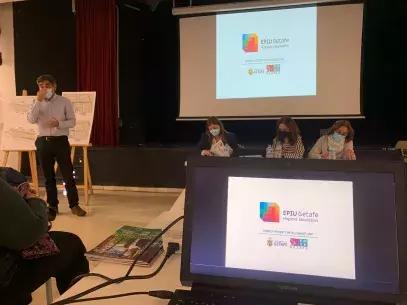Financial Models for Shared Sustainable Mobility Services- ZOOM IN

There are several reasons for zooming in on financial models, e.g.:
- Many different stakeholders and actors are involved in the development and operation of shared mobility services, from users and operators to land developers and facility owners.
- Many of the values generated are intangible, such as convenience, the perception of the area as attractive, and reduced congestion, emissions, and CO2. These intangible values are important but are challenging to capture in a financial model.
- Developing (and thus also capturing) the full value is a long-term process: It takes time to build new infrastructure and housing, and it takes time for users to adapt to new mobility services
The lack of shared mobility services in suburban districts of Copenhagen is evident, and in the LINC project, experiences from the urban transition areas of Hersted Business park and Gladsaxe Ringby, have shown that these challenges are further emphasized in suburban areas where private car usage is dominant and population density lower.
The knowledge explored in this zoom-in has also been used in the "Vision and potential plan for self-driving collective mobility" developed in the LINC project, which will be an important document in the communication with decision-makers within urban planning.
Learnings from others
There are other projects that have explored financing models for land development and shared mobility services. Here we highlight one in Denmark and three in Sweden. In Copenhagen, Denmark, political decisions and commercial operations enabled the development of a new urban area. The projects Density and S3 in Gothenburg, Sweden, explore how shared mobility services can be used to increase the value of facilities. In Barkaby, Sweden, the effects of improved efficiency in public transport caused by self-driving vehicles are explored. These projects represent a variety of how financial models for shared mobility could be designed.
The information about the projects is collected from project websites, project reports, and interviews with Anne Faxér, project leader for Density and S3, and Håkan Karlsson, public transport representative in Barkaby project.
Copenhagen port
In 2007 in Copenhagen, the CPH City & Port Corporation was founded, with the aim to manage publicly owned land and assets in the area in the most profitable way. The corporation is publicly owned but governed as a private company. When the local government rezoned the previous port area to residential and commercial use, the CPH City & Part corporation could realize the increased value of the land and invest the profit into a new metro line in the area and other developments. This further increased the value of the land. The case is fully described in this report and the current development is described on this website.
Density, Gothenburg
The Density project in Gothenburg, Sweden, explores the opportunities brought by a Mobility as a Service (MaaS) solution, offered primarily to facility owners (for private housing). In turn, the facility owners offer the MaaS solution to their customers, instead of parking places. The users can fulfill their transport needs, and the facility owners can use the former parking spaces for further housing or other facilities.
S3, Gothenburg
In the S3 project in Gothenburg, Sweden, a self-driving shuttle service is deployed in a business area. The project aims at improving public transport in the area, and to reduce the need for parking places. Various facility owners and companies are active in the area, and users are typically workers, students, and visitors. To find financial models that satisfy this blend of stakeholders and actors, and their different needs, has shown to be challenging, and the project is working on finding solutions through collaborative workshops.
Barkaby, Sweden
In Barkaby, Sweden, self-driving shuttles have been deployed as a part of public transport in a newly developed urban area (new housing and workplaces, new metro line). The municipality has the aim to provide sustainable, shared mobility to the new citizens and reduce car dependency, and the public transport authority participated to enable and test self-driving shuttles as a part of public transport. The project members describe the collaboration between the municipality, the public transport authority, and the mobility operators as a key success factor. See also this seminar about the project.
Actors
There are many actors and stakeholders in sustainable shared mobility solutions: users and travelers, public transport authorities, public transport operators, mobility operators, mobility service providers, IT-system providers, facility and land developers, facility owners, cities and regions, investors. They can all have different roles in different cases, and they are all part of the emerging mobility ecosystem that intertwines users, mobility systems, and land and facility owners/developers.
Values Released by Mobility Services
There are many potentials and values released when new mobility services are introduced to an area. In summary, previous projects have focused on three main values that are more tangible, and can be captured and used to finance sustainable, shared mobility:
- The increased value of land, when new and/or improved public transport makes the area more accessible (e.g. the Copenhagen port, and the metro in Barkaby). Driverless shuttles could further emphazise this value by improving access to the public transport. This value is primarily released for facility developers and land owners.
- The value created when space for parking places (low-value) can be utilized for housing and offices (high-value). (e.g. the S3 and the Density projects). This value is primarily released for facility developers and facility owners
- The value created by more cost effective public transport, when the self driving shuttles enable removing the driver from the buses. This could enable on-demand services (improved service level) to a reduced cost. This value is primarily released for public transport authorities and operators.
In turn, releasing these values drives a positive spiral that releases other, also intangible, values like reduced car dependency, reduced congestion, improved public transport.
The Role of the City - Embracing the Future of Mobility
The emergence of new shared mobility services, like autonomous collective mobility, provides new opportunities for municipalities to reach their long-term sustainability goals. At the same time, their role in the mobility ecosystem will change. It is critical that municipalities are aware of this since which role they take will have an impact on the shaping of future mobility services and how they contribute to the sustainability goals.
In the review of the cases in this zoom in, different potential roles for the municipality has crystalized:
- Lead the land and mobility development, by laying out long term visions and goals
- Realize these by leading long-term multi-stakeholder private-public collaborations, e.g. in the form of a publicly owned company.
- Participate in collaboration platforms and meeting arenas together with private actors.
- Be an active facility developer, facility owner, and employer, e.g. by procuring mobility services for employees and businesses.
- Catalyze the development by enabling tests with shared, automated mobility. E.g. provide necessary street space, provide access to relevant IT systems.
- Regulate the landscape and set up the framework for the development through regulations, fees and incentives, and development plans. E.g. set limits on the number of parking places allowed in an area.
The importance for municipalities to recognize their role and level of development is also discussed by Deloitte Insights, where they introduce the Future of Mobility Maturity Curve for the government. In the Maturity Curve, municipalities and governments can recognize their current status and explore what they need to do to move to the next maturity level. The different roles for the municipality in the new mobility ecosystem, and in particular the governance tools available are also investigated in the project Smart mobility requires smart governance.
The importance for municipalities to recognize their role and level of development is also discussed by Deloitte Insights, where they introduce the Future of Mobility Maturity Curve for the government. In the Maturity Curve, municipalities and governments can recognize their current status and explore what they need to do to move to the next maturity level.
Recommendations for the LINC Project
All of the values described above can be realized in the municipalities around the new light rail. The new light rail on its own raises the value of the land. This can be further increased by also opening up opportunities to avoid using the more valuable land for parking places. Reducing operational costs by removing the driver is probably farther into the future, as the technology is not yet sufficiently mature.
Four concrete things to focus on to enable capturing of the values created by the light rail and the new mobility services, and transforming them into sustainable urban environments are:
- Foster collaboration among actors in the emerging mobility ecosystem. Participate in and (potentially lead?) a public/private partnership for the development of the land. In this partnership, private and public organizations can set up a shared vision to work jointly towards.
- Create an environment for sustainable development, including regulations that support the value capturing of the shared mobility services. One example is to set limitations on the number of parking places allowed in an area.
- Form an agglomeration of municipalities, for example in the shape of an enterprise as in the Copenhagen Port case. This agglomeration can unite the vision, and reinvest the surplus from increased land value enabled by the new light rail line to further increase the land value.
- Procure mobility services for their own business and employees, and be a role model while at the same time provide a customer basis for mobility operators.

About this resource
The Urban Innovative Actions (UIA) is a European Union initiative that provided funding to urban areas across Europe to test new and unproven solutions to urban challenges. The initiative had a total ERDF budget of €372 million for 2014-2020.
Similar content




